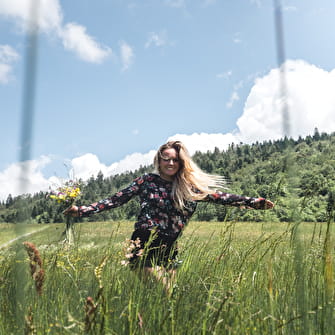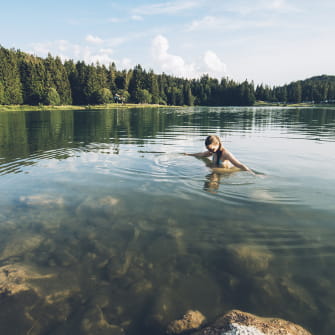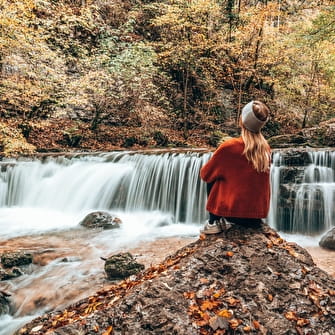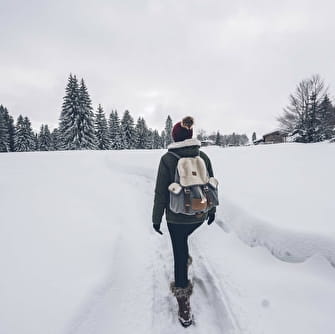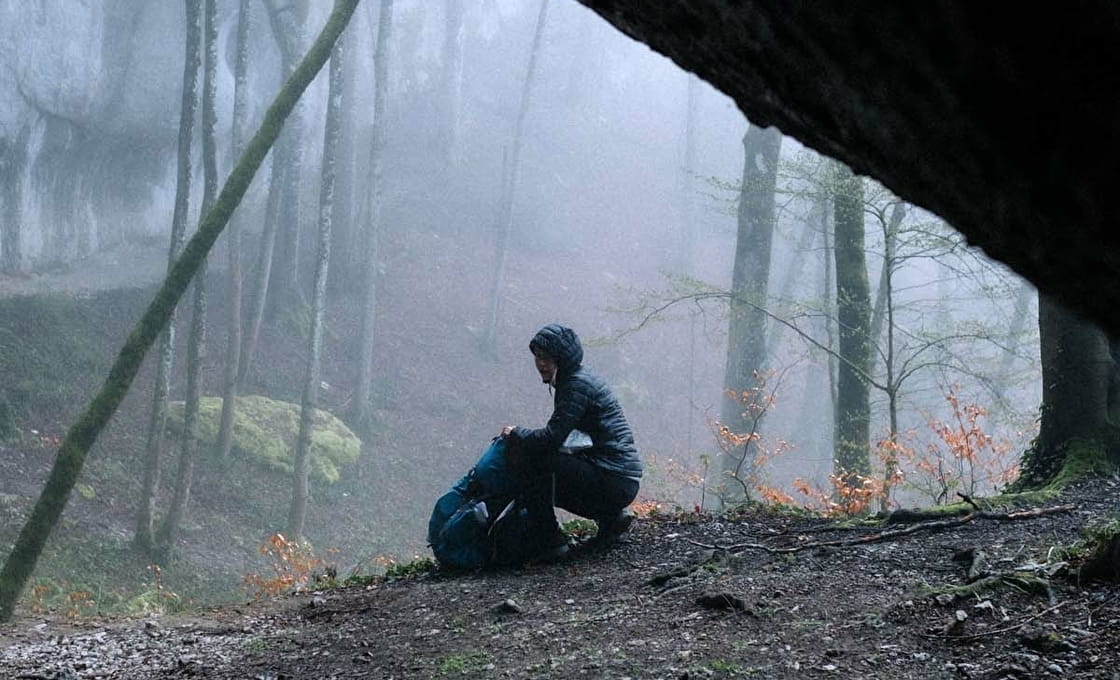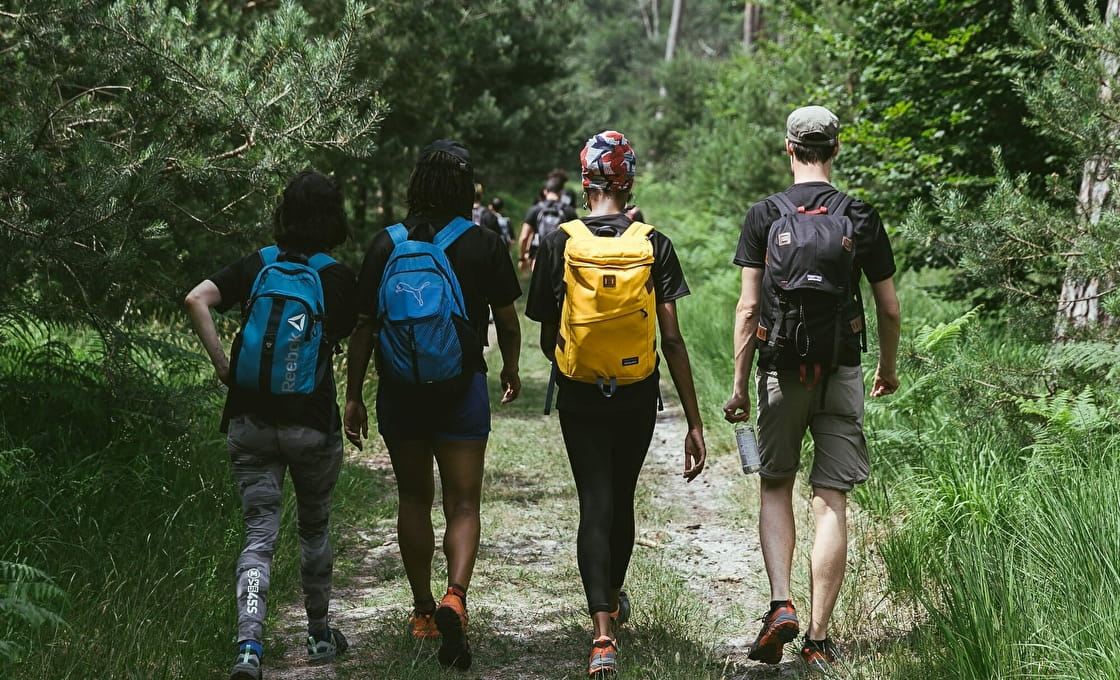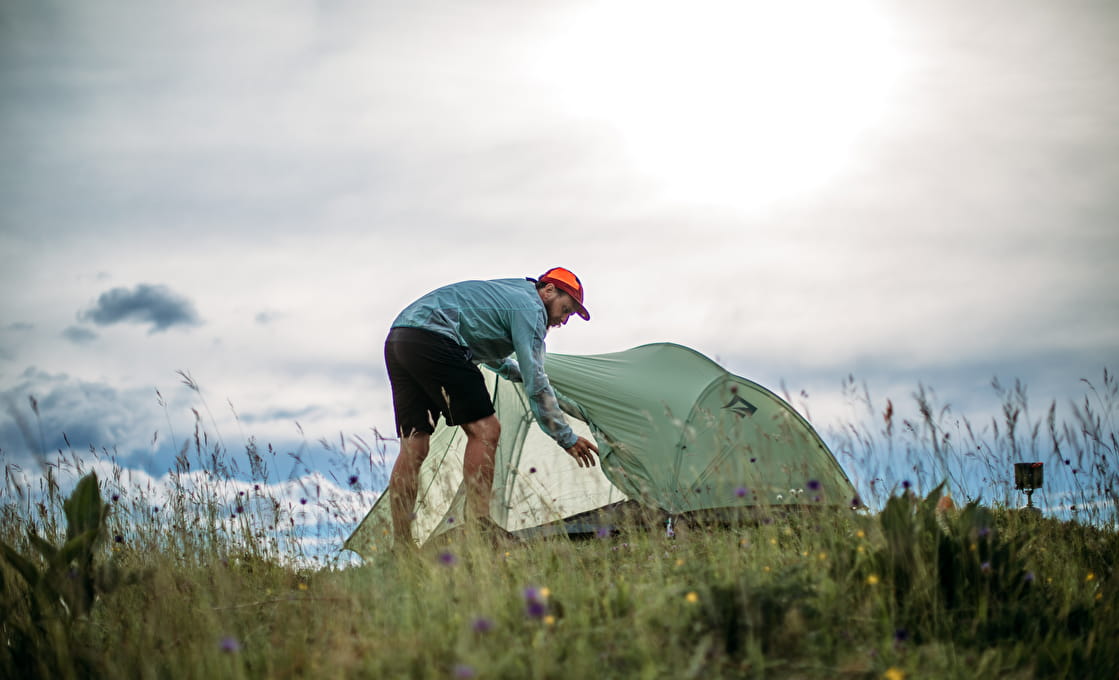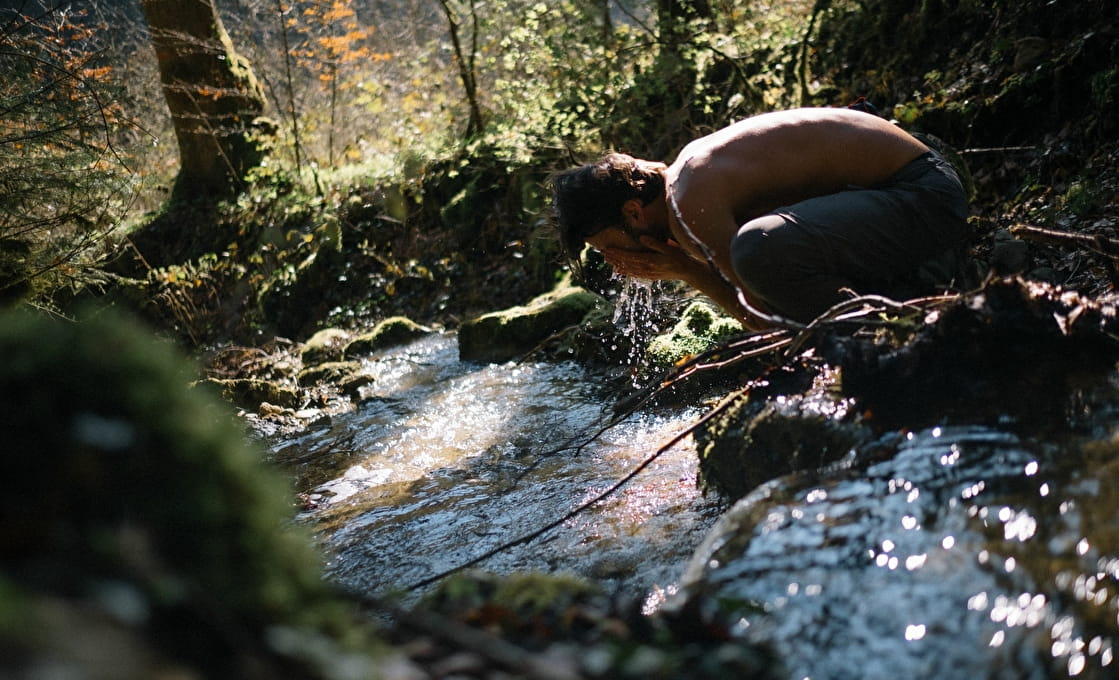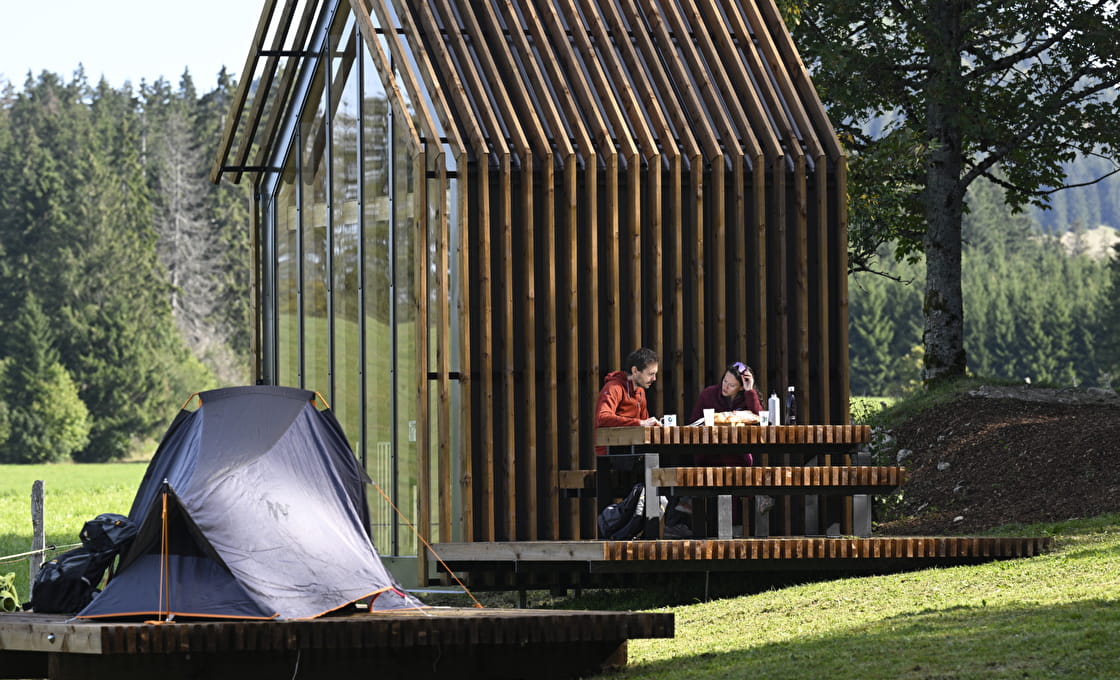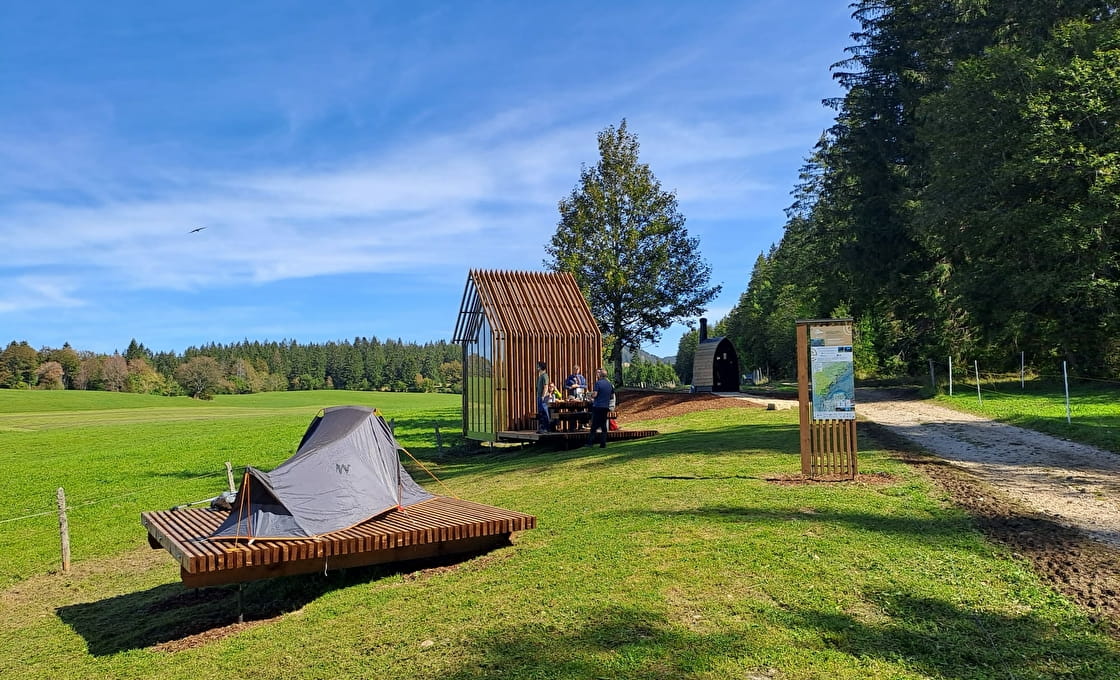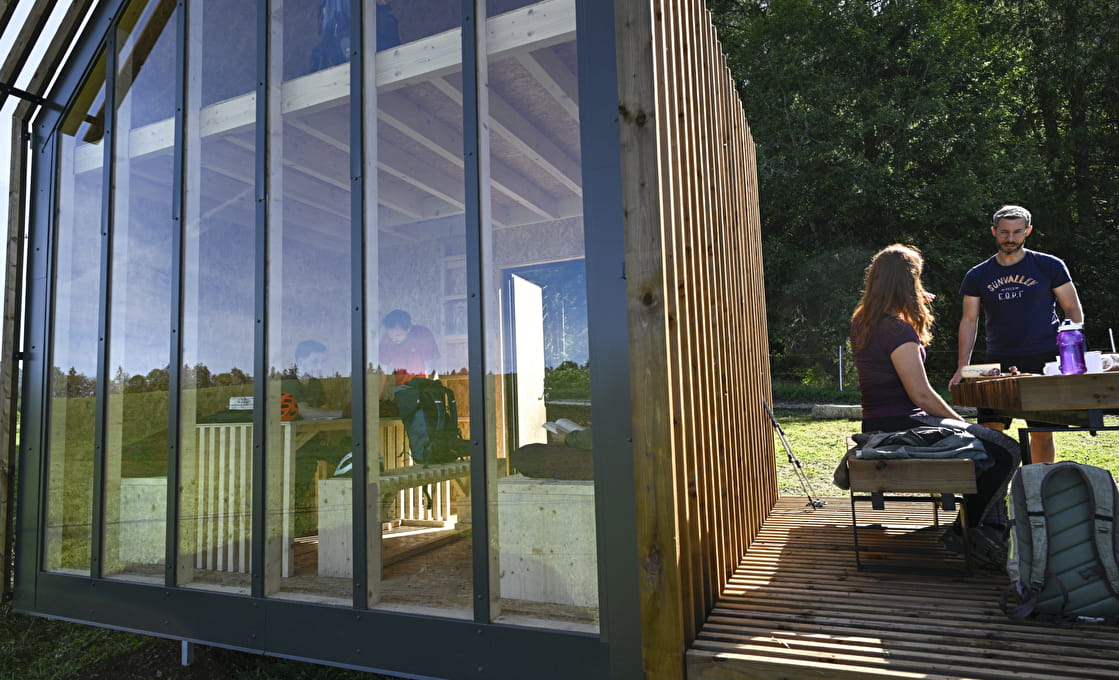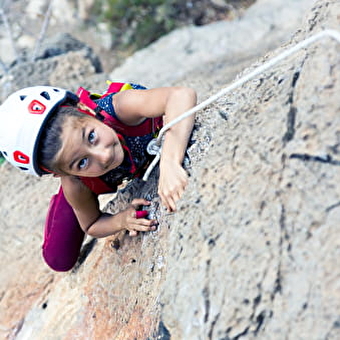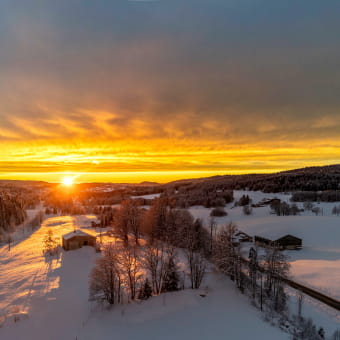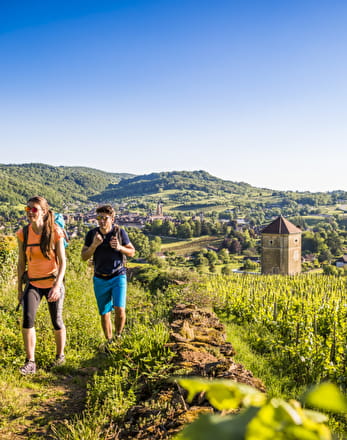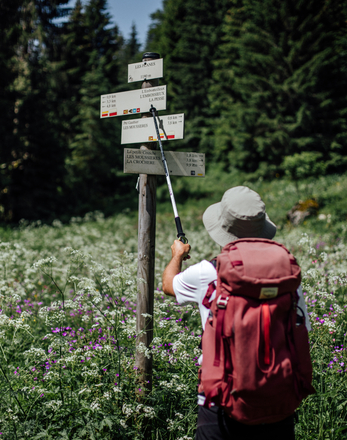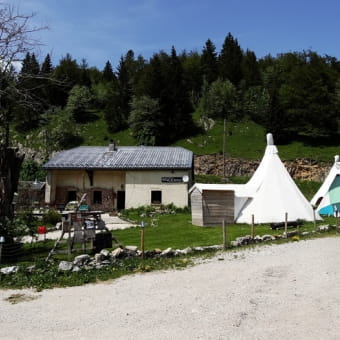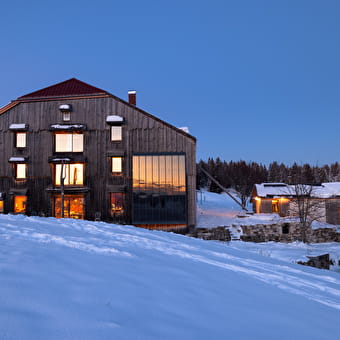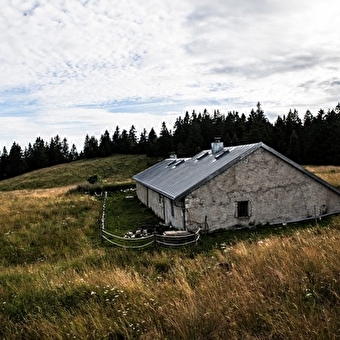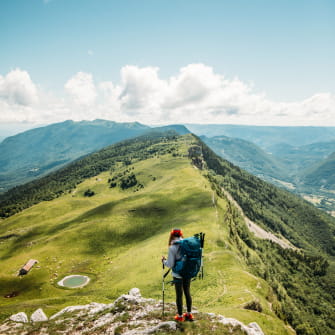Bivouacking in the Jura Mountains
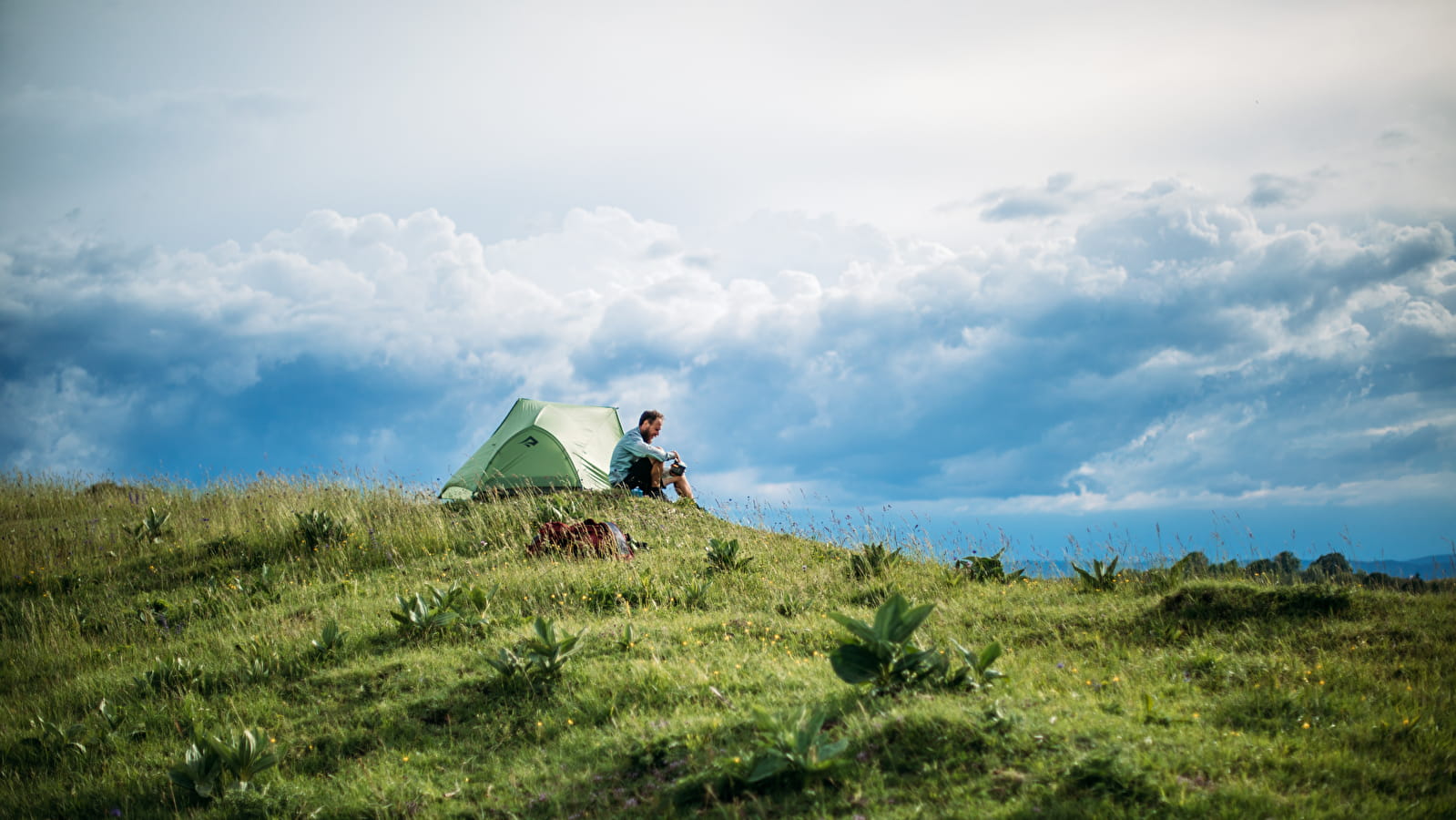
For a self-sufficient hiking trip or outdoor adventure, try bivouacking in the Jura Mountains, if you dare! This gentle and generous region is the ideal place for an overnight experience in the wild that you'll never forget. In the shelter of your tent or under the stars, take a break surrounded by our most beautiful mountains. Whether you're guided or going alone, here you'll find all the suggestions and advice you need to bivouac safely and successfully.
Bivouacking at the most beautiful spots in the Jura Mountains
Pep up your trekking or touring adventure by bivouacking at the Jura Mountains' most beautiful spots! With spectacular scenery galore, the unspoilt natural setting of our mountains is the perfect choice for this larger-than-life immersion into the wild.
Follow our legendary itineraries - the Grande Traversée du Jura, the Échappée Jurassienne or the Via Cluny - to spend a weekend or more exploring the multiple mountain trails for micro-adventures galore.
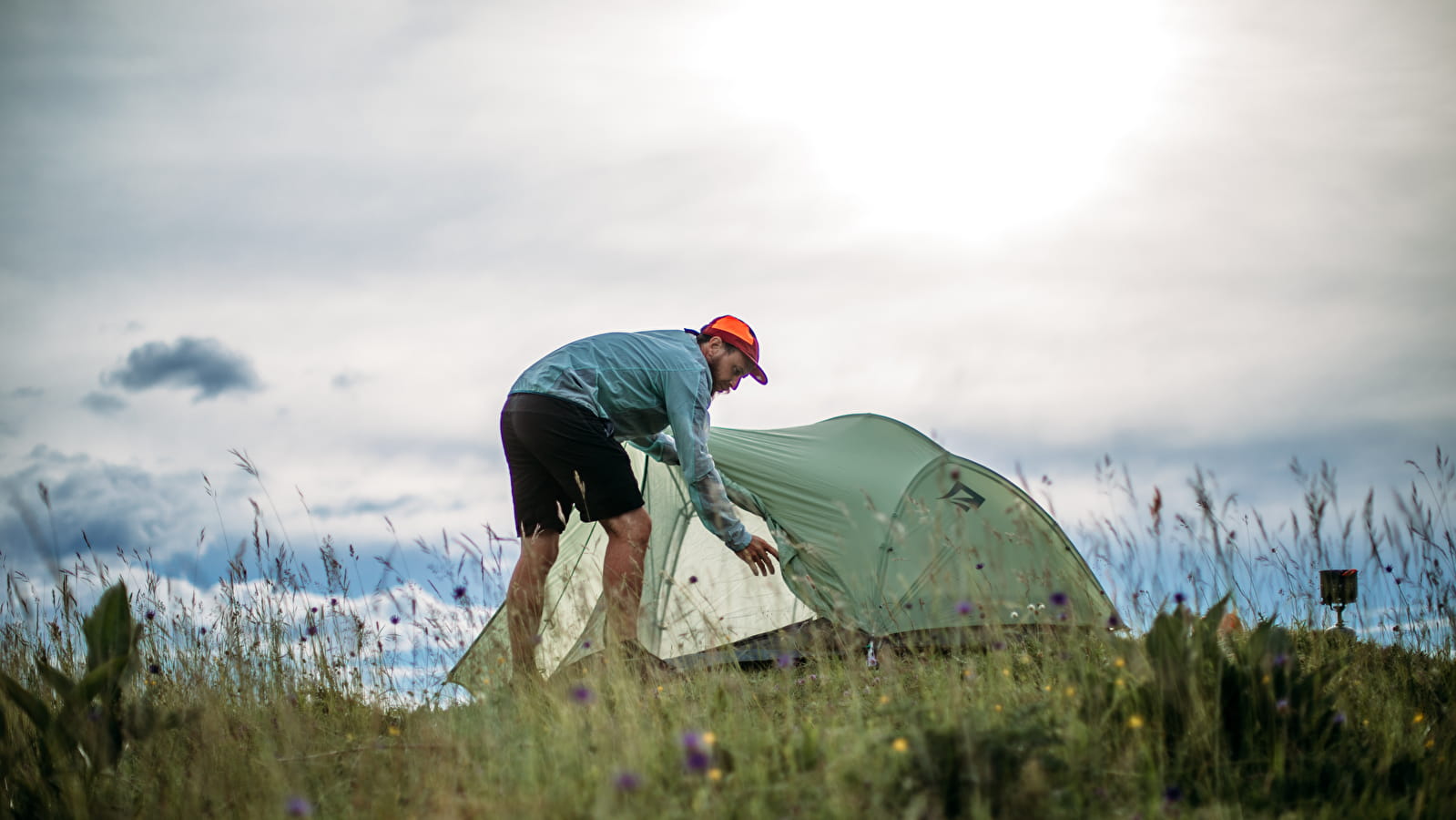
Bivouacking camps in the Jura Mountains
If you like the idea of bivouacking but don't fancy spending the night alone, deep in the forest, then you'll be interested to know that, thanks to a number of public and private initiatives, there are multiple bivouacking spots in the Jura Mountains. Between stopping places, shelters, private land, mountain refuges, cabins and even caves, you'll be spoilt for choice!
Purists can camp at the top of our most beautiful mountains for a room with a view that makes it well worth the effort!
Our permanent bivouacking spots
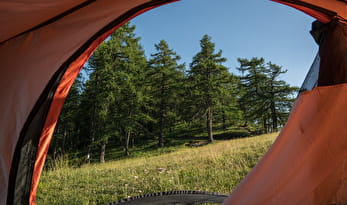
- At La Michaille, you'll be greeted by Orlane who invites you to camp in the garden of her authentic Franche-Comté farm, with access to sanitary facilities and, as an optional extra, evening meals if you've worked up an appetite.
- Near Mouthe, you'll sleep near a pack of polar dogs raised by Les Equipages Adam's. On the land of the ecological farm you'll find a platform where you can pitch your tent.
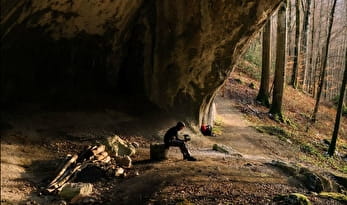
In the heart of the Doubs valley, a magnificent arch carved into the rock provides a shelter that's some fifty metres wide and ten metres high. Welcome to the Bisontin cave!
Invisible from the forest path, the cave offers peace and quiet as well as shelter from bad weather.
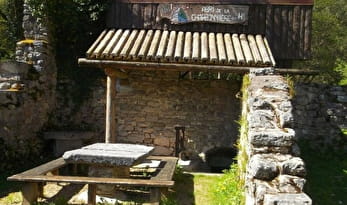
Here are two places to take shelter in the heart of the Doubs Horloger Regional Nature Park:
- The Charbonnière cabin at Les Échelles de la Mort, once a hotspot for smugglers on the French-Swiss border, now a heavenly nature spot.
- The Abri des Pêcheurs, a cabin on the Doubs riverbank near the Saut du Doubs waterfall, with a wood-burning stove and power supply, to recharge your devices!
The bivouacking stop on the Grande Traversée du Jura itinerary
Set in the heart of nature on the GTJ skiing and hiking trails, this new-generation bivouac area in Les Seignes is ideal for outdoor sports enthusiasts in search of a picnic spot or a sheltered place to sleep.
Accessible all year round, this stopping place also has a cabin that sleeps 4 to 6 people.
Mountaintop bivouacking spots
The generous, gently-rolling Jura Mountains have no shortage of stunning panoramic views. Here are 2 beautiful mountaintops where bivouacking is allowed, for a room with a view that makes it worth the effort!
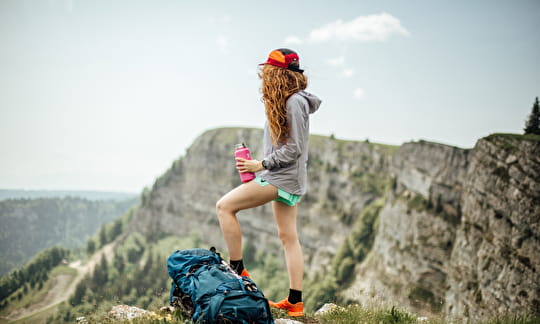
At the top of the Mont d'Or, bivouacking is tolerated on the condition that certain rules are observed. Before you go, we recommend you enquire at the Pays du Haut Doubs Tourist Office before you leave.
Contact the local Tourist Office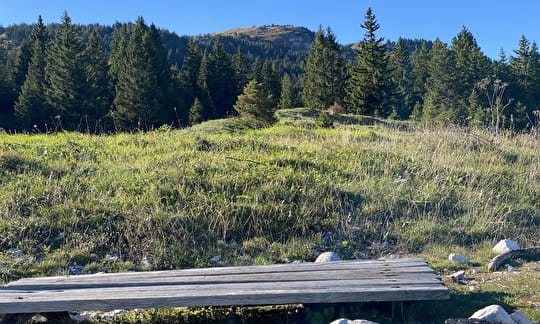
The Crêt de la Neige stands in a National Nature Reserve and therefore imposes strict rules relating to bivouacking. 2 possibilities:
- In the open air (with no tent or tarpaulin), bivouacking is allowed within 20 metres of the trail, but not on pastureland.
- With a tent, bivouacking is allowed only outside the Nature Reserve boundary and near the mountain refuges that are open to the public.
Contact the local Tourist Office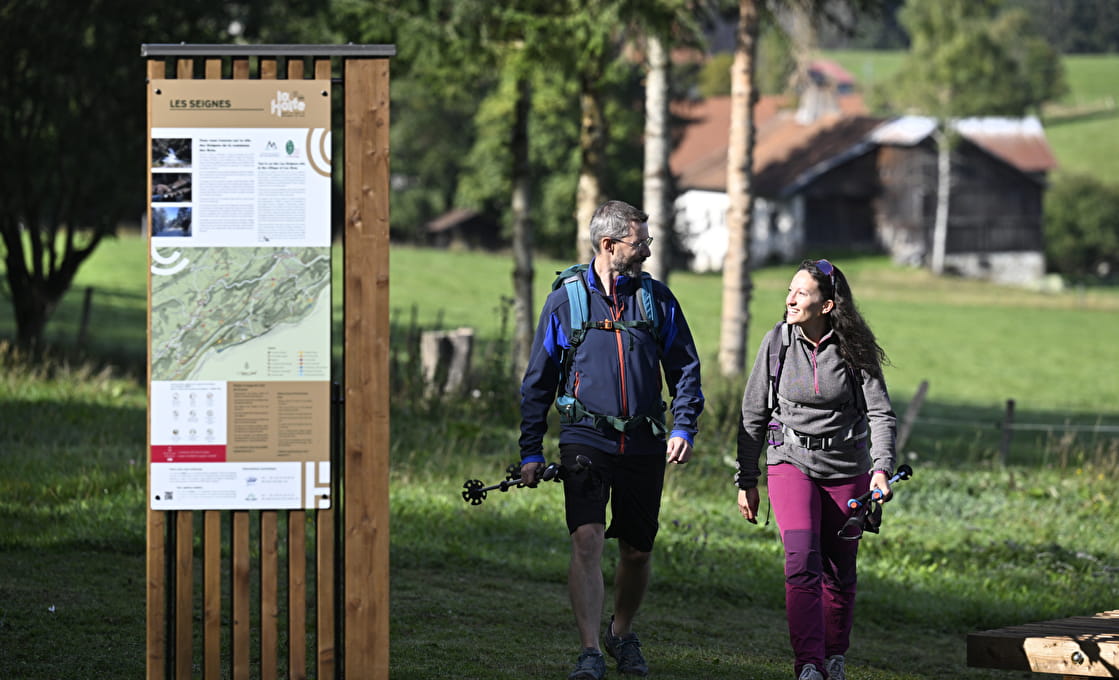
Bivouacking with a guide!
Sleeping under the stars, rising with the sun, alone in the world but at one with nature... If you love the idea but remain hesitant, unsure where to go or where to sleep, then take our advice and try bivouacking with a guide. There's no shortage of guides with a passion for these mountains who will be delighted to take you to their favourite spots!
Guided weekends for an introduction to bivouacking in Jura
As the first experience provider in France to have understood this need to be at one with nature, Chilowé organises 2 different micro-adventures in the Jura Mountains, one in summer and one in winter.
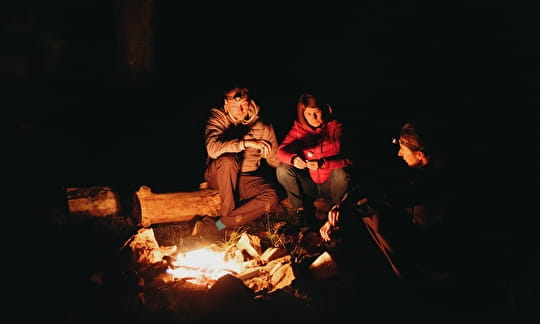
Your programme includes:
- introduction to bivouacking techniques,
- hiking along the most beautiful trails of the Jura Mountains,
- observation of wildlife and vegetation,
- evening under the night sky, around a fire, admiring views of the Alps, Mont Blanc and the Vanoise mountains!
Go for it!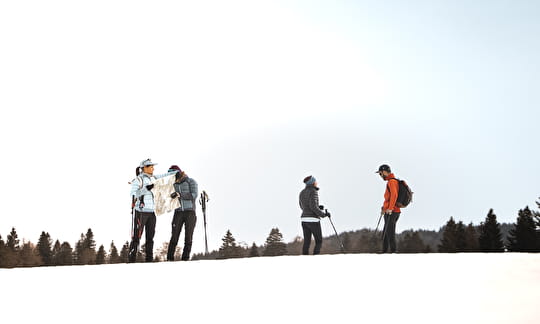
Your programme includes:
- observing local wildlife tracks,
- looking for the ideal bivouacking spot,
- learning winter bivouacking techniques (keeping warm, wind protection, pitching tents in the snow),
- Jura-style cheese fondue and moonlight walk.
Take the challenge!Other guided bivouacking suggestions
So you already have some bivouacking experience and want to add a little excitement to your next adventure? Born and bred in the local region, our guides have a passion for these mountains and will take you off the beaten track for an alternative experience. All you have to do is pick your theme!
2 legendary itineraries for long-distance bivouac hiking!
Famous for their breathtaking scenery, these 2 waymarked itineraries are dotted with beautiful bivouacking spots.
1- The Grande Traversée du Jura hiking trails covering some 400 kilometres;
2- the iconic Échappée Jurassienne (352 km) which cares little about the border between France and Switzerland!
Follow the guide!
A few tips for successful bivouacking
If you've never gone bivouacking before and have no idea how to prepare for this fabulous adventure, no worries! Follow these few basic rules and tips to stay safe during your night in the great outdoors.
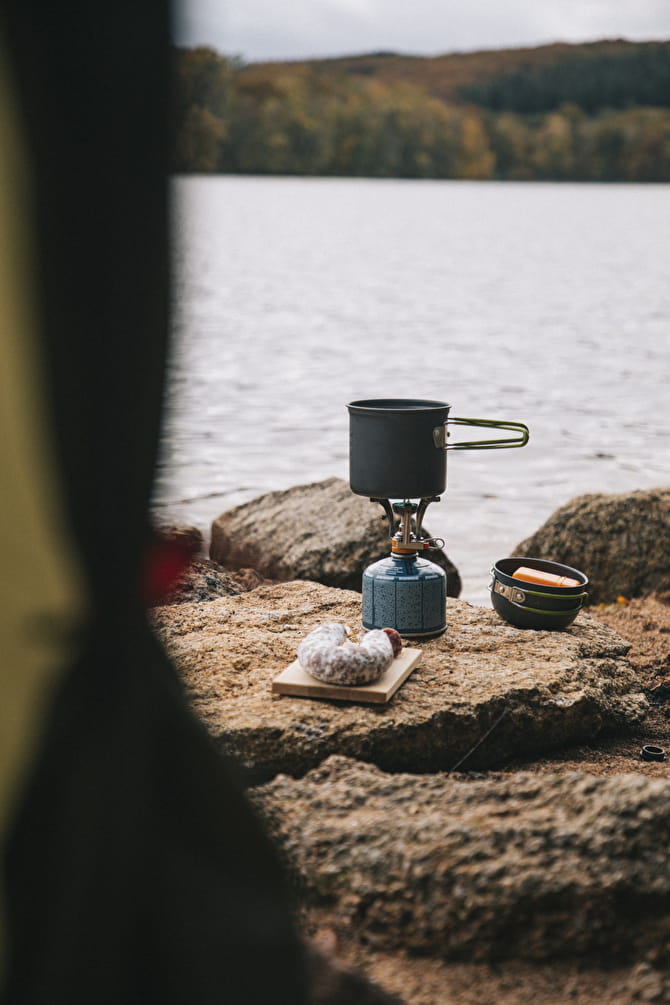
Besides carrying ID, here's a list of essential items to ensure your bivouacking experience goes smoothly:
- First-aid kit
- Head torch
- Sleeping bag, pillow and ground sheet
- Emergency tent or tarpaulin
- Survival blanket
- Camping stove and gas cartridge
- Camping tableware and knife
- Bottle of water and filter bottle
- Firelighter
- Warm clothing, waterproof garments and spares
- Meals and snacks
- Roll of toilet paper
- Basic toiletries
- Suncream, sun glasses, hat, etc.
- Power bank to recharge your devices
- Whistle, pen and paper
- Bin bag
- Compass
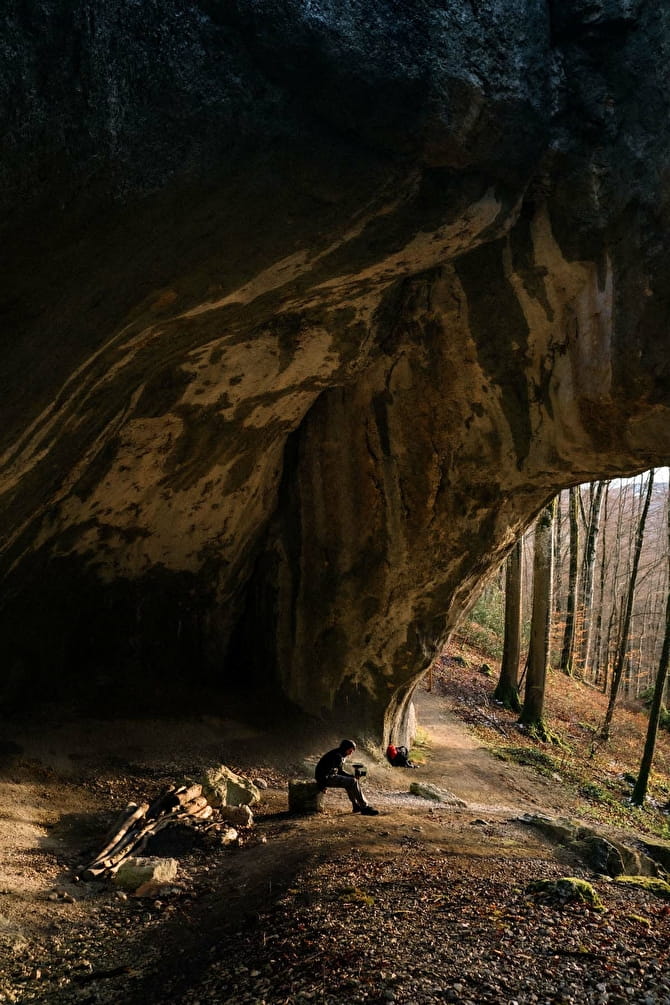
Beware! Bivouacking and wild camping are not the same thing, as different rules apply.
Wild camping generally applies to campers with a vehicle who stay in the same place for more than one night, while bivouacking (with or without a tent) tends to be a more minimalist and environmentally mindful experience.
Here are a few golden rules to help you become a bivouacking expert:
- Choose a suitable spot, sheltered from bad weather and other hazards, and where bivouacking is not prohibited.
- Once you've chosen a spot, ask the landowner for permission to camp.
- Your presence must be temporary! Set up camp as late as possible in the evening and pack up early in the morning.
- Exercise discretion! Make sure you are hidden from view and leave no trace of your presence when you leave.
- Do not light a fire as you could be fined €135. Use a camping stove instead, with caution.
Bivouacking, a whole state of mind!
Before pitching your tent wherever you fancy, be aware that the French Urban Land-Use Code forbids bivouacking in the following areas:
- Forests, woodlands and parks listed as protected zones or nature reserves
- Roads and public paths
- Within 200 metres of tapped water supplies intended for human consumption, in the interests of hygiene
- Within 500 metres of a listed historical monument or heritage feature
- On sites located in a listed natural heritage protection zone and in certain Natura 2000 zones
- On private land, fields or paths (without the owner's permission)
And in the Jura Mountains specifically? Here's a non-exhaustive list of places where bivouacking is prohibited:
- The 4 Lakes sector (including the 4 Lakes panoramic viewpoint and the Pic de l’Aigle),
- The Hérisson valley and waterfalls
- Bonlieu Lake
If you're on the GTJ trail, good news! Bivouacking is allowed along all seven GTJ routes. However, certain 'APPB' zones (covered by a Prefectoral Biotope Protection Decree) are out of bounds for bivouackers between 15 December and 30 June. These include the following mountain forests of Haut-Jura:
- Risoux
- Massacre
- Bois de Ban-Arobiers
- Haute-Joux (Park excluded)
- Combe Noire (Park excluded)
In the Haute-Chaîne du Jura National Nature Reserve, bivouacking is allowed:
- Without the shelter of a tent or tarpaulin
- For one night only from 7pm to 9am
- Outside mountain pastures where cattle are grazing
- Within 20 metres of the trail and outside pastures >> Find out more
In case you're wondering how you'll know whether you're on private land, in a protected zone or near a listed monument, here's our advice:
- Find out before you leave
- Enquire at the local town hall or Tourist Office
- Check the IGN Geoportal and display the appropriate maps in the section on protected areas
- Check prefectoral decrees
- Consult the websites of national and regional parks on your route
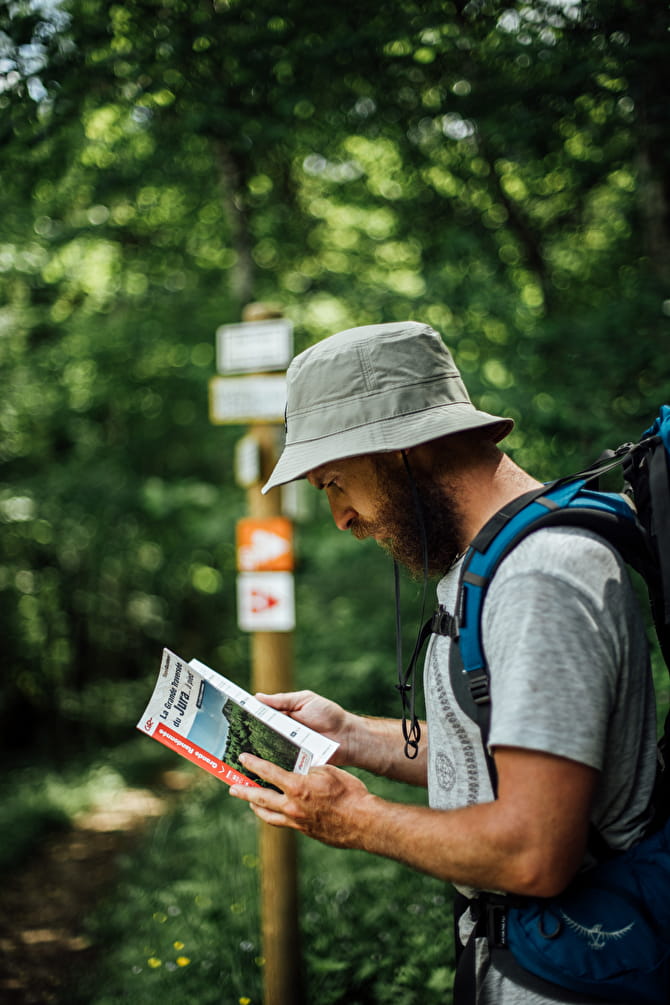
Spending the night in a tent in the great outdoors is a magical experience but requires proper planning.
Before leaving, it is important that you:
- Plan your route meticulously (elevation range, technical challenges, duration, water supply, etc.). Freedom is not the same as improvisation!
- Be aware of emergency telephone numbers
- Prepare an information sheet in case of an accident (medication, allergies, people to contact, etc.)
- Test your camping stove and other equipment
- Check the weather forecast
- Download the itinerary onto your smartphone for off-line access
- (Re)read attentively bivouacking rules and regulations
- Let somebody know where you're going
Don't have a tent? Then why not stay at a mountain refuge?
The mountain refuges are basic shelters but also friendly little havens that offer a timeless experience. Far from the hustle and bustle of the daily routine, they provide the best experience a hiker can hope for. In the heart of the Haute Chaîne du Jura National Nature Reserve, plan your itinerary to include some of these cocoons concealed in the natural surroundings.
A trek of several days in the Jura Mountains - tried and tested for you!



